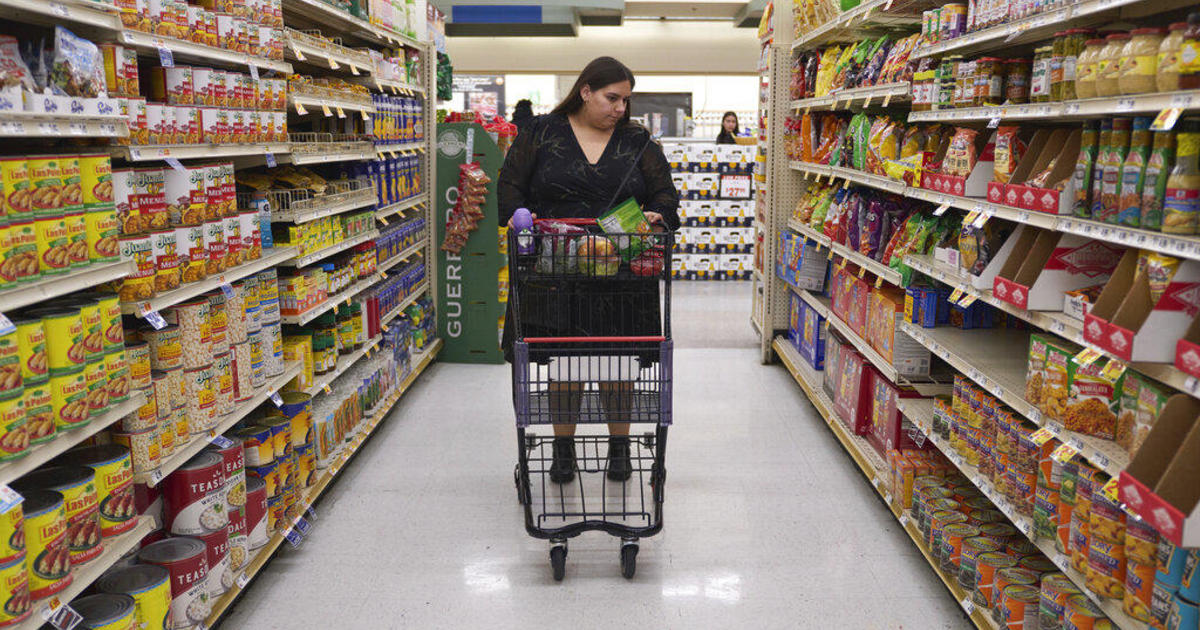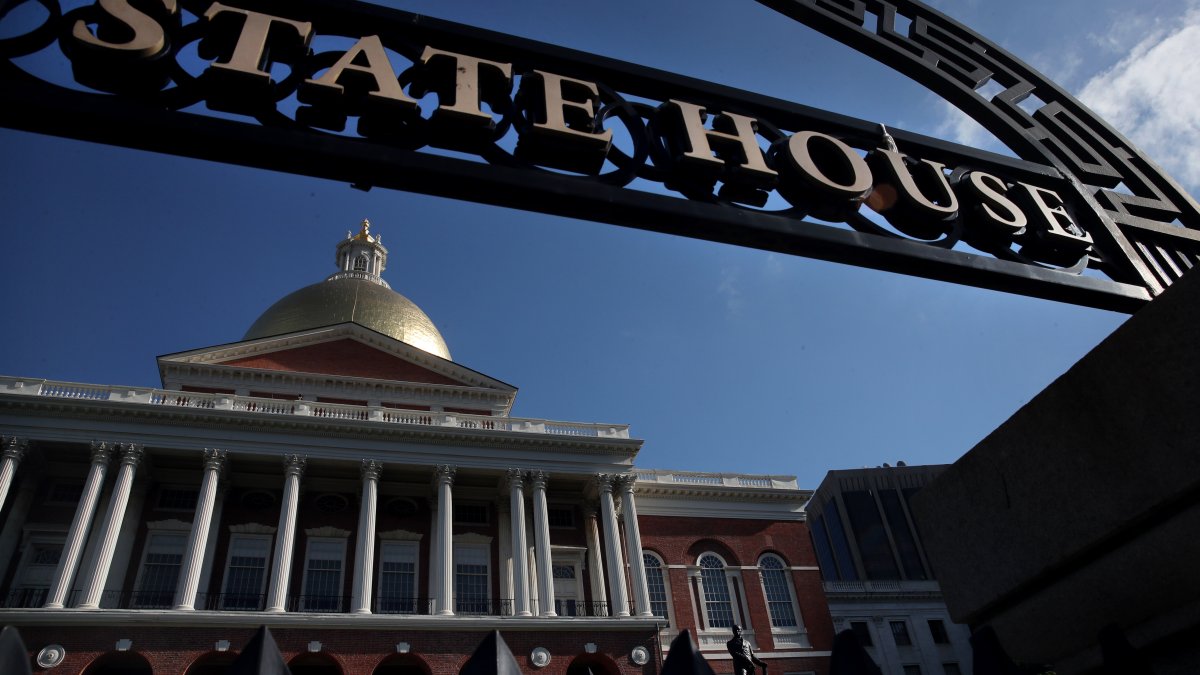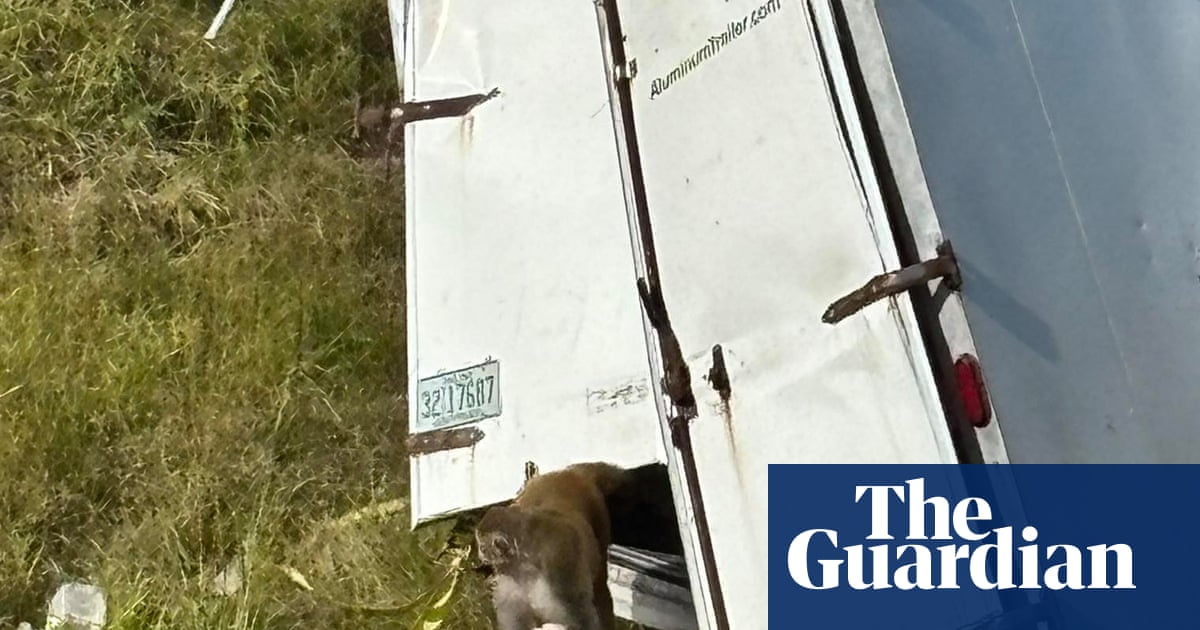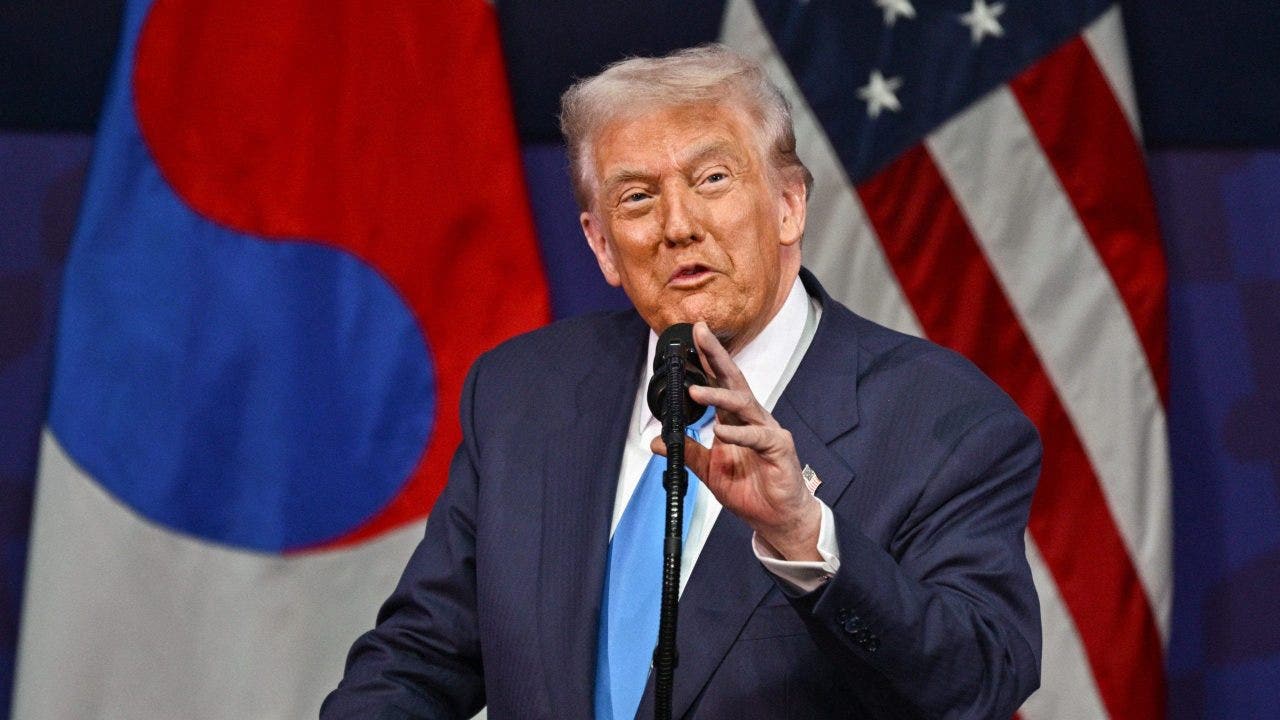News
Thousands Protest Trump’s Return to White House Days Before His Inauguration

Some climbed into buses in the wee hours of the morning. Others boarded planes from across the country or drove bleary-eyed through the night. No matter how they got to Washington on Saturday, they shared a common goal: to protest against President-elect Donald J. Trump.
Just two days before Mr. Trump’s inauguration, thousands of people attended the People’s March across Washington. Despite the damp and chilly weather on Saturday, demonstrators came out to rally against Mr. Trump’s hard-right plans for the country and show support for causes like civil rights, racial justice, immigration and gun violence prevention.
“I am angry and frustrated,” said Jillian Wheat, who came to the march from Columbus, Ohio, with her 14-year-old daughter, Emma. “I’m worried that he is going to dismantle our democracy.”
It was a sequel of sort to the Women’s March in 2017, right after Mr. Trump was sworn in for his first term, a protest that focused on women’s reproductive rights. But the march was rebranded and expanded to include more people and a wider range of issues. Various sponsors, including the Sierra Club and Time to Act, a group against authoritarianism, backed the event on Saturday.
With signs that called Mr. Trump a felon, an oligarch and a danger to democracy — one read, “such a disaster that even grandmoms have to take to the streets to resist” — protesters yelled chants such as, “Stand up! Fight back!” and “No justice, no peace, no Trump,” at times injecting an expletive into the chant.
Many, if not most, attendees said they were nervous that Mr. Trump would try to roll back more rights they valued than he did in his first administration, during which he nominated Supreme Court justices who helped overturn Roe v. Wade. They were hoping that he would not strip away climate change protections and L.G.B.T.Q. rights, and that he would not follow through with his threat to carry out mass deportations of undocumented immigrants.
Debbie Pierce, a gerontologist from Tampa, Fla., wiped tears from her eyes as she held up a photo of a young relative who recently told her that she might be a lesbian.
“I’m here for her,” said Ms. Pierce, referring to her relative. “With this new administration, I don’t know if she will be safe.”
Alana Eichner, co-director of the local chapter of the National Domestic Workers Alliance, came to the march with more than a dozen women who work as caregivers for children and the elderly. She said she hopes that Mr. Trump realizes that domestic workers — including many who are undocumented — are essential to the American economy and help the country function.
“We’re here to make sure these workers are protected and valued,” she said, as the women she came with nodded in agreement.
On the dawn of a second Trump presidency, marches also were held in other cities, including New York, Nashville and Portland, Ore. All were different — and felt different — than the ones held to protest his first term.
The Women’s March eight years ago was much bigger than the People’s Marches on Saturday. More than 470,000 people had packed into the nation’s capital in 2017, ready and energized to fight after his surprise defeat of Hillary Clinton. The protest turned into a sea of pink as many attendees wore pink knitted hats.
This time, the crowd in Washington was smaller and the pink hats were sparse. Mary Griffin, who flew to Washington from Seattle for both Saturday’s march and the one in 2017, said she was troubled by the lower turnout, adding that people were squished together shoulder-to-shoulder at the 2017 march. She said she suspects that voters for Vice President Kamala Harris are still in shock and “in the doldrums,” frozen about how to show their resistance to the new administration.
“We need to get our energy back,” said Ms. Griffin, a 63-year-old lawyer. “I think once Trump starts moving in the direction I think he’s going in, the pendulum will swing back and people will be energized again.”

News
Want to opt out of AI? State labeling laws might help

Red STOP AI protest flyer with meeting details taped to a light pole on a city street in San Francisco, California on May 20, 2025.
Smith Collection/Gado/Getty Images
hide caption
toggle caption
Smith Collection/Gado/Getty Images
Utah and California have passed laws requiring entities to disclose when they use AI. More states are considering similar legislation. Proponents say labels make it easier for people who don’t like AI to opt out of using it.
“They just want to be able to know,” says Utah Department of Commerce executive director Margaret Woolley Busse, who is implementing new state laws requiring state-regulated businesses to disclose when they use AI with their customers.
“If that person wants to know if it’s human or not, they can ask. And the chatbot has to say.”
California passed a similar law regarding chatbots back in 2019. This year it expanded disclosure rules, requiring police departments to specify when they use AI products to help write incident reports.
“I think AI in general and police AI in specific really thrives in the shadows, and is most successful when people don’t know that it’s being used,” says Matthew Guariglia, a senior policy analyst for the Electronic Frontier Foundation, which supported the new law. “I think labeling and transparency is really the first step.”
As an example, Guariglia points to San Francisco, which now requires all city departments to report publicly how and when they use AI.
Such localized regulations are the kind of thing the Trump Administration has tried to head off. White House “AI Czar” David Sacks has referred to a “state regulatory frenzy that is damaging the startup ecosystem.”
Daniel Castro, with the industry-supported think tank Information Technology & Innovation Foundation, says AI transparency can be good for markets and democracy, but it may also slow innovation.
“You can think of an electrician that wants to use AI to help communicate with his or her customers … to answer queries about when they’re available,” Castro says. If companies have to disclose the use of AI, he says, “maybe that turns off the customers and they don’t really want to use it anymore.”
For Kara Quinn, a homeschool teacher in Bremerton, Wash., slowing down the spread of AI seems appealing.
“Part of the issue, I think, is not just the thing itself; it’s how quickly our lives have changed,” she says. “There may be things that I would buy into if there were a lot more time for development and implementation.”
At the moment, she’s changing email addresses because her longtime provider recently started summarizing the contents of her messages with AI.
“Who decided that I don’t get to read what another human being wrote? Who decides that this summary is actually what I’m going to think of their email?” Quinn says. “I value my ability to think. I don’t want to outsource it.”
Quinn’s attitude to AI caught the attention of her sister-in-law, Ann-Elise Quinn, a supply chain analyst who lives in Washington, D.C. She’s been holding “salons” for friends and acquaintances who want to discuss the implications of AI, and Kara Quinn’s objections to the technology inspired the theme of a recent session.
“How do we opt out if we want to?” she asks. “Or maybe [people] don’t want to opt out, but they want to be consulted, at the very least.”
News
In a Looming Nuclear Arms Race, Aging Los Alamos Faces a Major Test

In a sprawling building atop a mesa in New Mexico, workers labor around the clock to fulfill a vital mission: producing America’s nuclear bomb cores.
The effort is uniquely challenging. Technicians at Los Alamos National Laboratory must handle hazardous plutonium to create the grapefruit-size cores, known as pits. They do so in a nearly 50-year-old building under renovation to address aging infrastructure and equipment breakdowns that have at times disrupted operations or spread radioactive contamination, The New York Times found.
Now, the laboratory is under increasing pressure to meet the federal government’s ambitions to upgrade the nation’s nuclear arsenal. The $1.7 trillion project includes everything from revitalizing missile silos burrowed deep in five states, to producing new warheads that contain the pits, to arming new land-based missiles, bomber jets and submarines.
But the overall modernization effort is years behind schedule, with costs ballooning by the billions, according to the Congressional Budget Office. In 2018, Congress charged Los Alamos with making an annual quota of 30 pits by 2026, but by last year it had produced just one approved for the nuclear stockpile. (Officials have not disclosed whether more have been made since then.)
That pace has put the lab — and especially the building called Plutonium Facility 4, or PF-4 — under scrutiny by Trump administration officials.
News
With food stamps set to dry up Nov. 1, SNAP recipients say they fear what’s next

Roughly 42 million Americans rely on food stamps that arrive every month on their electronic benefit transfer cards. On Nov. 1, that aid is set to abruptly stop amid the ongoing U.S. government shutdown, potentially leaving households scrambling to figure out how to put food on the table.
People enrolled in the Supplemental Nutrition Assistance Program, or SNAP, told CBS News they’re bracing for some tough financial choices. Kasey McBlais, a 42-year-old single mom who lives in Buckfield, Maine, said she’s planning to delay paying her electric and credit card bills to make sure her two children have enough to eat.
“Now we’ll have to prioritize which bills we can pay and which can wait,” said McBlais, who works for a Maine social services agency and who draws about $600 a month in SNAP benefits. “My children won’t go hungry.”
The suspension of food aid comes as Democratic and Republican lawmakers continue to trade blame over the government shutdown, which now stands as the second-longest funding lapse in U.S. history. The U.S. Department of Agriculture, which funds the SNAP program, warned earlier this month that there would be insufficient funding to pay full November benefits if the shutdown continued, prompting local governments to post notices on their websites about the potential interruption in payments.
“Bottom line, the well has run dry,” the USDA said in a memo posted Sunday on its website. “At this time, there will be no benefits issued November 01.”
Democratic lawmakers have asked the USDA to use contingency funds to cover most of next month’s SNAP benefits, but an agency memo surfaced on Friday that says “contingency funds are not legally available to cover regular benefits.” The document says the money is reserved for such things as helping people in disaster areas.
That means beginning Nov. 1, the government will halt about $8 billion in monthly SNAP payments, cutting off food assistance for the one in eight Americans who are enrolled in the program. Recipients, who include households in every state, typically get about $187 a month on a prepaid card to help cover the cost of groceries.
Some U.S. states, including Louisiana, Vermont and Virginia, have vowed to continue disbursing SNAP benefits even if the federal government suspends payments. New York on Monday pledged $30 million in emergency food assistance, while also recently committing to provide millions more in support for food banks.
Yet the USDA memo stipulates that states won’t be reimbursed for temporarily providing food aid to residents, raising questions about the viability of that approach.
Sharlene Sutton, a 45-year-old mother of four in Dorchester, Mass., who left her job as a security officer last month to care for one of her children, who has epilepsy, said she relies on the $549 she gets in monthly SNAP benefits to feed her family.
“I was freaking out because I’m like, ‘Oh my god, now I don’t have a job,’” she told CBS News. “I’m not worried about myself that much. It’s about the kids. Like, where am I going to get food from?”
Turning to food banks
Sutton said she’s looking for a food bank to help fill the gap if her food aid is cut off. But experts warn that the non-profit organizations alone aren’t capable of filling the $8 billion monthly hole left by a looming SNAP suspension.
“The charitable food system and food banks don’t have the resources to replace all those food dollars,” John Sayles, CEO of Vermont Foodbank in Barre, Vermont, told CBS News.
Already, food banks are getting an influx of calls from SNAP recipients who are worried about the payments freeze, and food shelves could see long lines next month if the shutdown persists, Sayles said.
“There is no safety net after SNAP other than the food shelf,” he added.
Albuquerque, New Mexico’s Roadrunner Food Bank, which typically serves 83,000 households per week, is “seeing panic” among residents due to the SNAP halt, said Katy Anderson, vice president of strategy, partnerships and advocacy at the nonprofit organization.
Even before this new surge in demand, food banks were already facing pressures because of the growing number of people seeking their services, aggravated this year by persistent inflation, and funding constraints. In March, the USDA said it was nixing $420 million in funding for a program that allows food banks to buy food directly from local farms, ranchers and producers.
A surge in patrons could also strain food banks as they face their own funding struggles and contend with growing demand thanks to inflation ticking higher in March, the USDA said it was nixing $420 million in funding for a program that allows food banks to buy food directly from local farms, ranchers and producers.
Broader economic impact
A temporary halt in $8 billion in monthly food aid could also impact local businesses, from grocers to farm stands, said Sayles of Vermont Foodbank. Each $1 in SNAP benefits provides an economic benefit of $1.60, he said, referring to the so-called multiplier effect in which dollars flowing through the local economy help support spending, jobs and growth.
“SNAP is the foundation of economic support for a lot of food retailers, like those smaller places in rural areas and the corner store in our cities,” said Kate Bauer, an associate professor of nutritional services at the University of Michigan. “So this has far-reaching impacts beyond just the people who get SNAP.”
SNAP is designed to provide supplemental aid for a family’s grocery budget, but some families depend on it as their main source of income to buy food, Bauer noted. For those living paycheck to paycheck, even a short disruption in benefits can have immediate consequences, experts said.
The loss of SNAP funding threatens some of the most vulnerable people in the U.S., with the Center on Budget Policy and Priorities noting that two-thirds of food-stamp recipients are children, seniors or people with disabilities.
For McBlais, the single mom, the issue isn’t political. Rather, it’s about making sure families can eat in an economy where many are already struggling to afford rent, utilities and basic groceries, she told CBS News.
“Everybody needs food — SNAP recipients are Democratic, Republicans and everything in between,” McBlais said.
-

 New York6 days ago
New York6 days agoVideo: How Mamdani Has Evolved in the Mayoral Race
-

 World1 week ago
World1 week agoIsrael continues deadly Gaza truce breaches as US seeks to strengthen deal
-

 News1 week ago
News1 week agoVideo: Federal Agents Detain Man During New York City Raid
-

 News1 week ago
News1 week agoBooks about race and gender to be returned to school libraries on some military bases
-

 Technology1 week ago
Technology1 week agoAI girlfriend apps leak millions of private chats
-

 Politics1 week ago
Politics1 week agoTrump admin on pace to shatter deportation record by end of first year: ‘Just the beginning’
-

 Business1 week ago
Business1 week agoUnionized baristas want Olympics to drop Starbucks as its ‘official coffee partner’
-

 News1 week ago
News1 week agoTrump news at a glance: president can send national guard to Portland, for now














